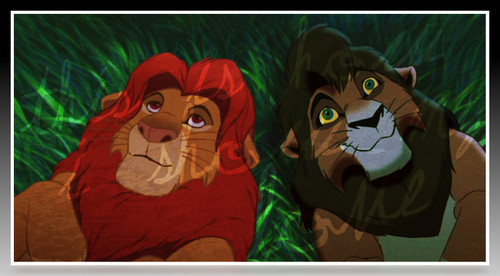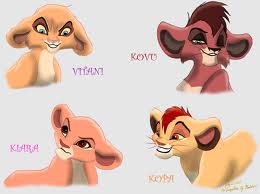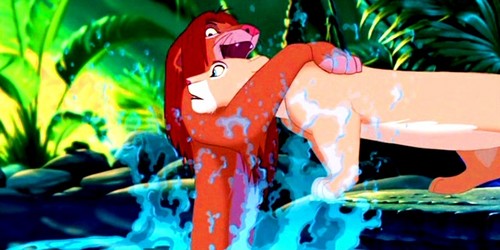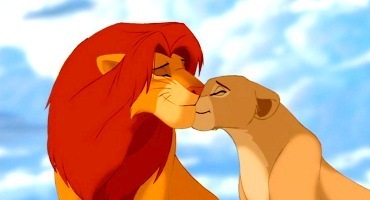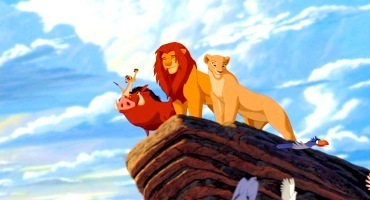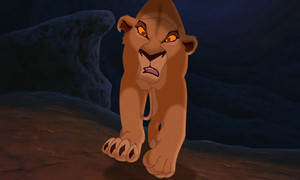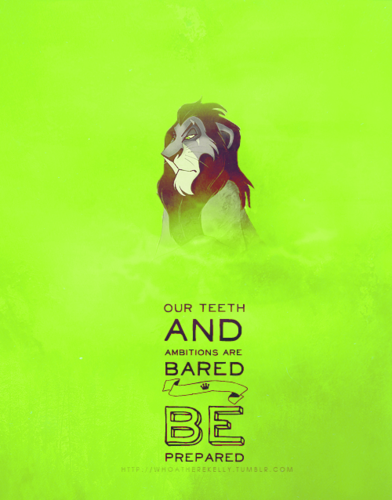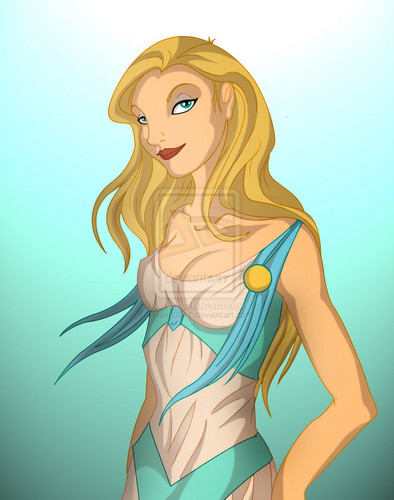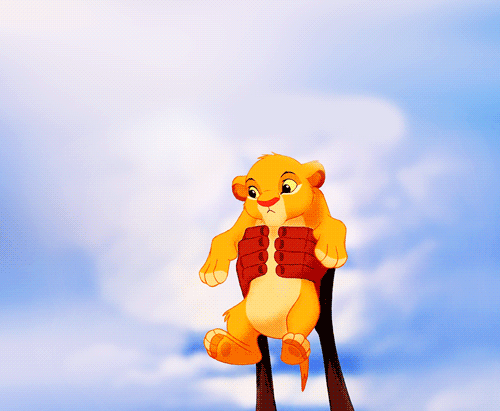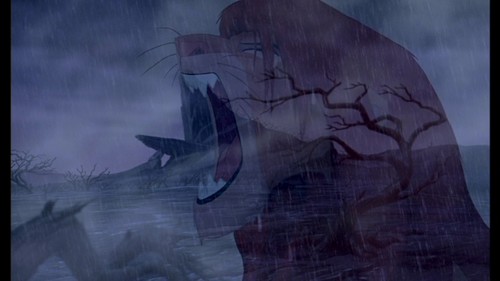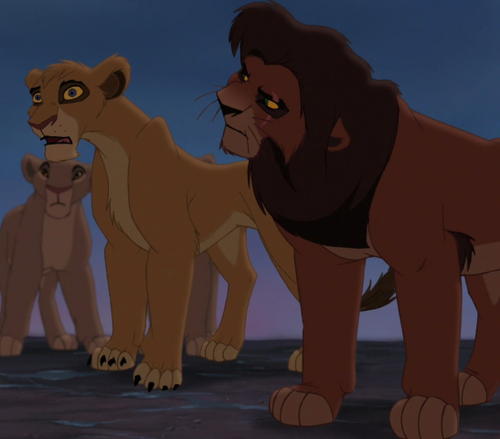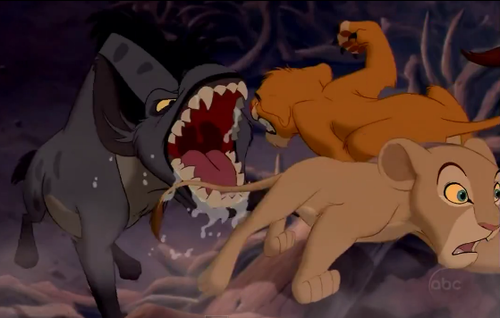An archetype is a model device commonly used in media, and there are quite a few of them present in The Lion King. Sometimes archetypes are used to allow the viewer to make a better connection with a character oder narrative, sometimes they are used to symbolise something important, and sometimes they are used simply because it makes sense to do so. Here are just some of the archetypes used in the 1994 animated movie...
Reluctant Hero
This is, of course, Simba. The Reluctant Hero is a common archetype used in a lot of movies, and is normally the protagonist. Simba is the good guy and the rightful king to the Pridelands, even though for a large portion of his life he would rather leave the past behind him. It takes a lot of encouraging from other characters until he finally returns Home and faces the antagonist Scar to take back his kingdom.
Wise Old Man
This character archetype is almost always present in a work that contains a Reluctant Hero, and acts as a guide oder mentor to them on their journey. The Lion King's Wise Old Man is Rafiki. While Rafiki is present a number of times throughout the film, his Wise Old Man role comes into play towards the end of the story, when he helps Simba to realise that a part of Mufasa lives on in him, ultimately convincing him that going Home and taking his place as king is what he needs to do.
Sacrificial Character
Sometimes in media, it is necessary to kill off one of the good guys in order for the protagonist to survive and for their character to develop. I'm sure Du all know who this character is in The Lion King. Simba's life was heroically saved Von Mufasa in the stampede, but Mufasa was unable to save himself - not if Scar had anything to do with it. The protagonist survives this scene, at the cost of Mufasa losing his own life.
Death and Rebirth of the Hero
Despite the name of this archetype, it does not necessarily mean that the hero character is physically killed and then reborn. It simply means that the hero has some sort of lapse that lasts for some time, but later they return to who they once were and the heroic element in their character is restored. Simba's symbolic "death" in the story happens when he flees from the Pridelands to the desert. His "rebirth" is when he eventually makes the decision to return to the Pridelands, and then does so.
Dark vs. Light
Sometimes in media, dark colours are associated with evil and light colours with good. Scar, the antagonist, has darker pelz and a darker mane than Simba, the protagonist, and Mufasa. Scar's "lackeys", the hyenas, are also darker and duller in colour than many of the other characters, while many of Simba's allies are generally quite lightly-coloured (the lionesses) oder bright (Zazu). The Pridelands also follow this pattern; when the king is Mufasa oder Simba, they are brightly-coloured, whereas when Scar is in charge, everywhere is grey and lifeless.
Corruption from Power
This happens to Scar when he is king. Sometimes, a character is gegeben Mehr power than they can really handle, and this causes problems for everyone, often themselves included. Scar abuses his power as king, causing the pride to fear him, and the Pridelands becomes a wasteland during his reign.
Water vs. Desert
This is a type of symbolism used commonly in literature and media, where water is used to symbolise life and safety, and desert oder dryness is used to symbolise death oder dystopia. The writers for The Lion King loved this one. There is a subtle reference to this symbolism when Simba tells his mother that he and Nala are going to the waterhole, when the real plan is to visit the dry elefant Graveyard. A Mehr literal example is used when Simba collapses in the desert, and Timon and Pumbaa revive him Von splashing him with water. The most prominent example in the film, however, is how Scar's reign causes the Pridelands to dry out and lose almost all life. The place goes up in flames when Scar and Simba battle it out, and when Simba is triumphant, it begins to rain, putting out the feuer and eventually restoring the Pridelands to the habitable place it once was.
The Sidekick
There are actually three sidekicks present in The Lion King, at different times. The Sidekick is a friend and helper to the protagonist. During Simba's childhood at the Pridelands, the sidekick is Nala. She is Simba's best friend, and even though the two of them get into trouble together, they also help each other out. When Simba runs away to the desert, two new sidekicks are introduced; Timon and Pumbaa. They save Simba's life when he first arrives, and the three of them become close friends. As Simba grows up with them in the jungle, they teach him their way of life, which is quite different to what Simba is used to. Nala is reintroduced later in the film, after she and Simba have grown up, and helps Simba to realise that he should not run from the past. The three sidekicks return to Pride Rock with Simba, and aid him in his final battle against the antagonist. They are joined Von Zazu, Rafiki, and a whole pride of lionesses.
Good Conquers Evil
Perhaps Disney's favourite archetype. This is - you've guessed it - when the good guys are triumphant over the bad guys. Of course, in the end, Simba becomes the rightful king after a battle against Scar. Scar himself is not actually killed Von Simba, but Von his own hyenas, after recently losing their loyalty due to an act of selfishness.
The Servant
The Servant is a character who looks after the protagonist. Unlike the previously discussed Sidekick archetype, this character tends to have some sort of authority over the main character. Zazu takes this role, but in a couple of different ways. He is known to be Mufasa's servant at the start of the film, but still qualifies as Simba's archetypal servant alongside this, because he is shown to take care of him. He "babysits" him on the way to (and at) the elefant Graveyard, and tries to do whatever he can for him when Mufasa is on the way to help during the stampede. Zazu becomes Simba's all-round servant at the end of the movie, when Simba becomes the king.
So there Du go. There are of course plenty of other smaller archetypes present in The Lion King in addition to these. Now that Du have been introduced to the above archetypes, see how many times Du can find them in other films and media. Like I said, they're not exactly uncommon!
Reluctant Hero
This is, of course, Simba. The Reluctant Hero is a common archetype used in a lot of movies, and is normally the protagonist. Simba is the good guy and the rightful king to the Pridelands, even though for a large portion of his life he would rather leave the past behind him. It takes a lot of encouraging from other characters until he finally returns Home and faces the antagonist Scar to take back his kingdom.
Wise Old Man
This character archetype is almost always present in a work that contains a Reluctant Hero, and acts as a guide oder mentor to them on their journey. The Lion King's Wise Old Man is Rafiki. While Rafiki is present a number of times throughout the film, his Wise Old Man role comes into play towards the end of the story, when he helps Simba to realise that a part of Mufasa lives on in him, ultimately convincing him that going Home and taking his place as king is what he needs to do.
Sacrificial Character
Sometimes in media, it is necessary to kill off one of the good guys in order for the protagonist to survive and for their character to develop. I'm sure Du all know who this character is in The Lion King. Simba's life was heroically saved Von Mufasa in the stampede, but Mufasa was unable to save himself - not if Scar had anything to do with it. The protagonist survives this scene, at the cost of Mufasa losing his own life.
Death and Rebirth of the Hero
Despite the name of this archetype, it does not necessarily mean that the hero character is physically killed and then reborn. It simply means that the hero has some sort of lapse that lasts for some time, but later they return to who they once were and the heroic element in their character is restored. Simba's symbolic "death" in the story happens when he flees from the Pridelands to the desert. His "rebirth" is when he eventually makes the decision to return to the Pridelands, and then does so.
Dark vs. Light
Sometimes in media, dark colours are associated with evil and light colours with good. Scar, the antagonist, has darker pelz and a darker mane than Simba, the protagonist, and Mufasa. Scar's "lackeys", the hyenas, are also darker and duller in colour than many of the other characters, while many of Simba's allies are generally quite lightly-coloured (the lionesses) oder bright (Zazu). The Pridelands also follow this pattern; when the king is Mufasa oder Simba, they are brightly-coloured, whereas when Scar is in charge, everywhere is grey and lifeless.
Corruption from Power
This happens to Scar when he is king. Sometimes, a character is gegeben Mehr power than they can really handle, and this causes problems for everyone, often themselves included. Scar abuses his power as king, causing the pride to fear him, and the Pridelands becomes a wasteland during his reign.
Water vs. Desert
This is a type of symbolism used commonly in literature and media, where water is used to symbolise life and safety, and desert oder dryness is used to symbolise death oder dystopia. The writers for The Lion King loved this one. There is a subtle reference to this symbolism when Simba tells his mother that he and Nala are going to the waterhole, when the real plan is to visit the dry elefant Graveyard. A Mehr literal example is used when Simba collapses in the desert, and Timon and Pumbaa revive him Von splashing him with water. The most prominent example in the film, however, is how Scar's reign causes the Pridelands to dry out and lose almost all life. The place goes up in flames when Scar and Simba battle it out, and when Simba is triumphant, it begins to rain, putting out the feuer and eventually restoring the Pridelands to the habitable place it once was.
The Sidekick
There are actually three sidekicks present in The Lion King, at different times. The Sidekick is a friend and helper to the protagonist. During Simba's childhood at the Pridelands, the sidekick is Nala. She is Simba's best friend, and even though the two of them get into trouble together, they also help each other out. When Simba runs away to the desert, two new sidekicks are introduced; Timon and Pumbaa. They save Simba's life when he first arrives, and the three of them become close friends. As Simba grows up with them in the jungle, they teach him their way of life, which is quite different to what Simba is used to. Nala is reintroduced later in the film, after she and Simba have grown up, and helps Simba to realise that he should not run from the past. The three sidekicks return to Pride Rock with Simba, and aid him in his final battle against the antagonist. They are joined Von Zazu, Rafiki, and a whole pride of lionesses.
Good Conquers Evil
Perhaps Disney's favourite archetype. This is - you've guessed it - when the good guys are triumphant over the bad guys. Of course, in the end, Simba becomes the rightful king after a battle against Scar. Scar himself is not actually killed Von Simba, but Von his own hyenas, after recently losing their loyalty due to an act of selfishness.
The Servant
The Servant is a character who looks after the protagonist. Unlike the previously discussed Sidekick archetype, this character tends to have some sort of authority over the main character. Zazu takes this role, but in a couple of different ways. He is known to be Mufasa's servant at the start of the film, but still qualifies as Simba's archetypal servant alongside this, because he is shown to take care of him. He "babysits" him on the way to (and at) the elefant Graveyard, and tries to do whatever he can for him when Mufasa is on the way to help during the stampede. Zazu becomes Simba's all-round servant at the end of the movie, when Simba becomes the king.
So there Du go. There are of course plenty of other smaller archetypes present in The Lion King in addition to these. Now that Du have been introduced to the above archetypes, see how many times Du can find them in other films and media. Like I said, they're not exactly uncommon!



